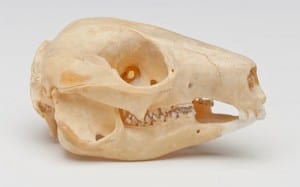Specimen of the Week 242 – the Marsupial Lion
By Jack Ashby, on 3 June 2016
1) Large lion-shaped predators were living in Australia until around 50,000 years ago – lion-shaped, but not lions. This is because there were no wild cat species in Australia*, and up until 3-5000 years ago when the dingo arrived with Polynesian traders, all large Australian mammals were marsupials. One such beast was Thylacoleo carnifex, the “marsupial lion”. Alongside this big predator lived “marsupial rhinos” (diprotodons), giant kangaroos, giant echidnas, “marsupial tapirs” (Palorchestes) and giant wombats (Phascolonus). All in all, Australia used to have much bigger animals than it does now.
2) It is believed that marsupial lions diverged from the branch of the marsupial tree that led to wombats and koalas. (more…)
 Close
Close




![LDUCZ-Z90 Thylacine skull [Grant Museum, UCL / Fred Langford-Edwards]](https://blogs.ucl.ac.uk/museums/files/2016/01/Fred-Langford-Edwards-LDUCZ-Z90.jpg)
